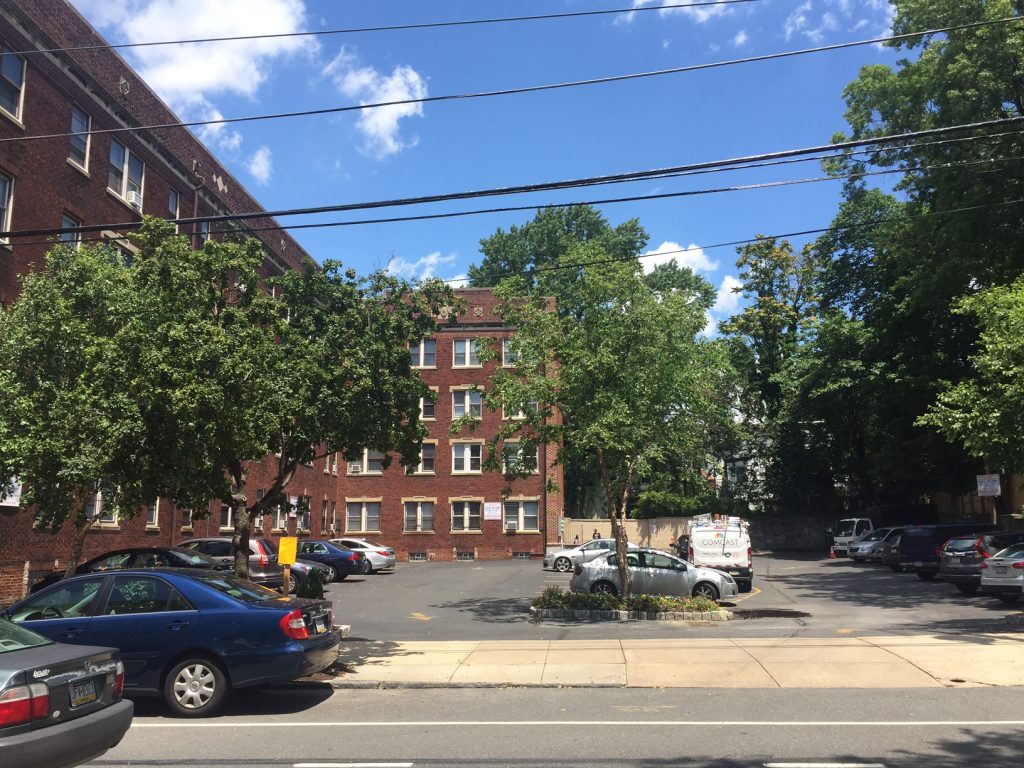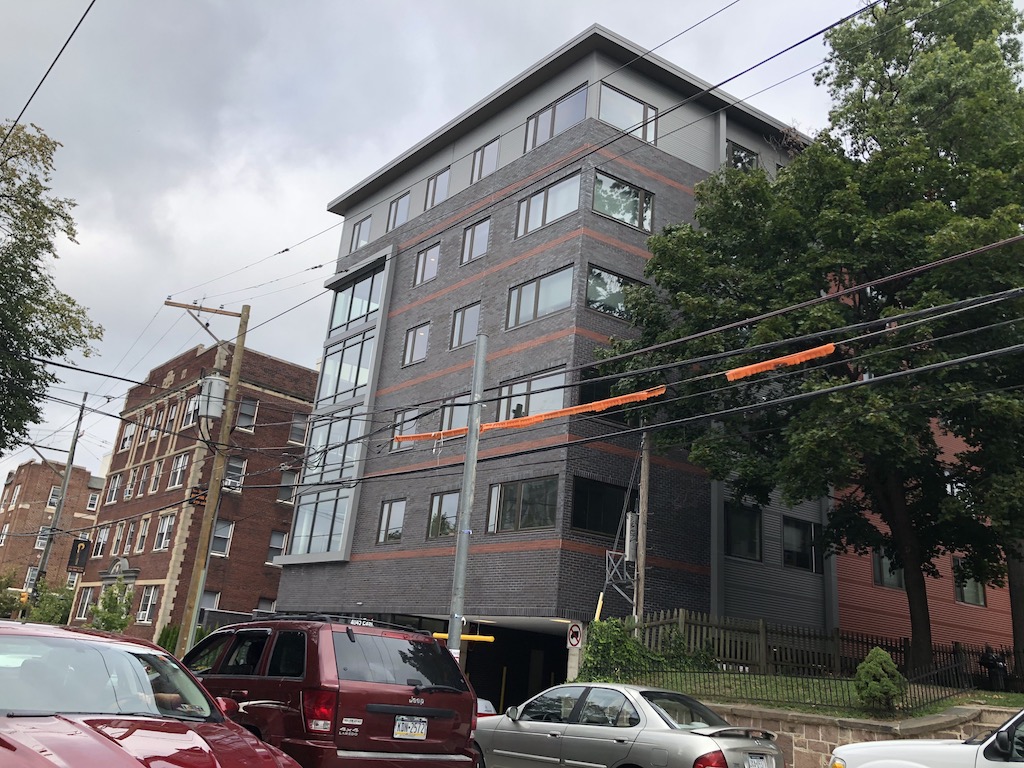As we push through the dog days of summer, we’re starting to feel those September vibes. The Birds are playing their third pre-season game this week. Pumpkin spice is starting to be a thing again. And college students in the region are starting to move back to campus, setting their sights on a couple weeks of partying before settling in for another semester laden with academic rigor. With students coming back, it feels like an ideal time to point out some new student housing options coming online as we hurtle toward the Fall ’19 semester, which brings us to the corner of 41st & Baltimore.
Roughly two years ago, we brought the apartment building at 4045 Baltimore Ave. to your attention, noting that it had been built immediately before the Great Depression and that it had held up pretty well in the intervening 90 years. Well, that’s only partially true. This building, known as Calvert Hall, once had an eastern wing which was demolished at some point in its history and got turned into a parking lot.

When we last covered the property, we noted that owners New Horizons Housing were planning to eliminate the surface parking lot and replace it with a new eastern wing. At the time, we wondered first whether the ZBA would grant the necessary variance for this project, and second, just how a new building would mesh with the existing structure which dated back nearly a century. In answer to the first question, the ZBA did indeed grant the variance. As for the second question, the answer can be seen below.




The new addition includes 49 apartments above 18 parking spaces. According to a reader, all of the units in the new building are already leased, with rent prices starting around $1300/mo for a one bedroom unit. As for the building itself, it’s quite a contrast from the building next door, loudly and proudly declaring itself as a product of contemporary development. For our part, we appreciate the contrast in styles which make it incredibly obvious that the western wing and the eastern wing were built at very different times. It’s certainly preferred to an attempt to imitate the architecture of the older section of the building, as we’ve seen many examples of those sorts of efforts fall quite flat. What do you think of the way that the new section of the building interacts with the older section?
